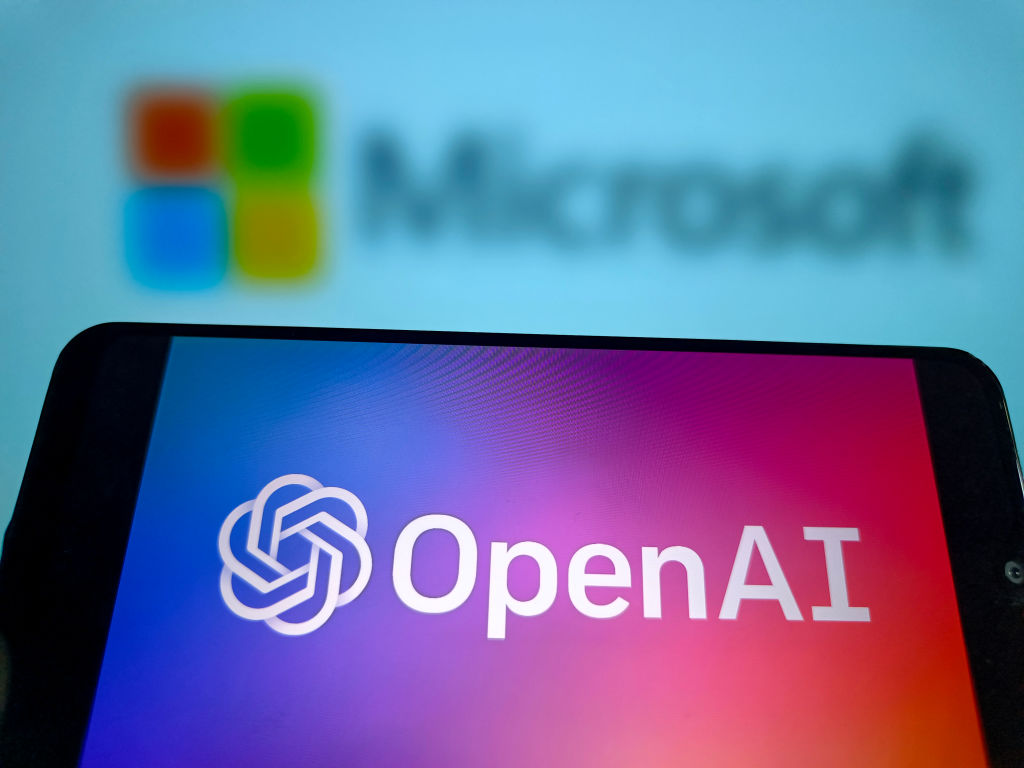
<strong>Image Credits:</strong>Costfoto/NurPhoto / Getty Images
OpenAI’s Strategic Revenue Shift: Plans to Reduce Microsoft’s Share by 2030 Analysis
Table of Contents
Current OpenAI-Microsoft Revenue Structure
OpenAI currently operates under a significant revenue-sharing agreement with Microsoft, allocating 20% of its top-line revenue to the tech giant. This arrangement forms a cornerstone of their partnership, established through substantial investments from Microsoft into OpenAI’s artificial intelligence research and product development. According to recently leaked financial documents reported by The Information, this OpenAI Microsoft revenue share represents a substantial financial commitment from the AI leader to its primary investor and technology partner.
The current arrangement reflects the depth of integration between the two companies, with Microsoft receiving a meaningful portion of OpenAI’s income in exchange for its financial backing and technological infrastructure. This revenue share model has been instrumental in supporting OpenAI’s rapid growth while providing Microsoft with direct financial benefits from the AI company’s expanding market presence.
Key Points of Current Revenue Structure
- OpenAI currently shares 20% of top-line revenue with Microsoft
- The arrangement is part of a comprehensive partnership agreement
- Microsoft provides both capital investment and Azure cloud infrastructure
- Current contract between the companies extends through 2030
- The partnership includes bilateral revenue sharing components
Planned Revenue Share Reduction Strategy
In a strategic financial pivot, OpenAI has informed investors of its intention to substantially reduce the revenue share allocated to Microsoft by the end of this decade. According to financial documents cited by The Information, OpenAI projects reducing its partner revenue share to approximately 10% by 2030, a 50% decrease from the current 20% arrangement. This OpenAI Microsoft revenue share reduction represents a significant shift in the financial relationship between the companies.
This projected decrease would effectively halve Microsoft’s percentage-based revenue from OpenAI operations, potentially signaling OpenAI’s desire for greater financial independence and improved profitability as it matures. The strategic revenue adjustment appears designed to coincide with the conclusion of the current contractual framework between the companies, suggesting a planned renegotiation of terms.
OpenAI’s Revenue Share Projection
- Current revenue share to Microsoft: 20% of top-line
- Projected revenue share by 2030: 10% to all business partners
- Represents a 50% reduction in Microsoft’s percentage-based revenue
- Timeline aligns with the expiration of current contractual agreements
- Suggests preparation for partnership renegotiation
OpenAI’s Corporate Restructuring Plan
The projected revenue share adjustment comes amid significant organizational changes at OpenAI. The company recently modified its restructuring approach, now planning to convert its for-profit division into a public benefit corporation (PBC) while maintaining control under its nonprofit arm. This revised corporate reorganization represents a significant shift from earlier considerations and directly affects the OpenAI Microsoft partnership dynamics.
The proposed restructuring would create a distinctive corporate architecture where commercial activities operate under PBC principles—balancing profit motives with defined public benefits—while ultimate governance remains with the nonprofit entity. This structure appears designed to preserve OpenAI’s stated mission focus while creating a more conventional corporate framework that could support future fundraising or even public market access.
| Current Structure | Proposed Structure | Key Differences |
|---|---|---|
| Nonprofit with for-profit subsidiary | Nonprofit controlling PBC entity | Enhanced mission alignment with commercial flexibility |
| Complex governance model | Nonprofit maintains control | Preserved mission-driven oversight |
| Traditional profit structure | Public benefit obligations | Formal commitment to public good alongside profits |
| Limited structural transparency | More defined governance framework | Potentially improved stakeholder clarity |
Microsoft’s Multi-Billion Dollar Investment
Microsoft has invested tens of billions of dollars in OpenAI, creating a deep financial entanglement between the companies that complicates any restructuring or revenue-sharing modifications. This substantial investment gives Microsoft significant leverage in discussions about OpenAI’s future direction and financial arrangements, particularly as they relate to the OpenAI Microsoft revenue share projections reported in the financial documents.
The current partnership agreement extends beyond simple revenue sharing to include intellectual property rights that permit Microsoft to incorporate OpenAI technologies within its own AI products. Additionally, the contract establishes exclusivity for OpenAI’s APIs on Microsoft’s Azure cloud platform, creating multi-dimensional business integration that transcends financial investment alone.
Microsoft’s Involvement in OpenAI
- Investment scale: Tens of billions of dollars
- Contract duration: Current agreement through 2030
- IP rights: Access to OpenAI technology for Microsoft products
- Technical integration: Exclusivity for OpenAI APIs on Azure
- Revenue arrangement: Bilateral sharing between companies
Partnership Implications and Future Outlook
The projected reduction in revenue sharing percentage raises significant questions about the long-term relationship between OpenAI and Microsoft. While a decrease from 20% to 10% would substantially alter the financial dynamics, several factors could mitigate the apparent impact on Microsoft. If OpenAI’s overall revenue grows dramatically by 2030, Microsoft could potentially receive more absolute dollars despite the lower percentage. Additionally, the value of technical integration and market positioning might outweigh pure revenue considerations.
The OpenAI Microsoft revenue share adjustment may also reflect OpenAI’s preparation for its next organizational evolution. As the company matures, reducing external financial obligations could position it for greater independence, improved profit margins, or even public market readiness. These strategic considerations suggest the revenue projection forms part of a comprehensive long-term vision rather than a simple financial adjustment.
Strategic Partnership Evolution
- Reduced percentage could be offset by substantial revenue growth
- Technical integration value may exceed direct revenue importance
- Adjustment could position OpenAI for next organizational phase
- Timeline suggests planned renegotiation strategy
- Both companies will likely seek balanced value exchange
Corporate Structure Approval Challenges
Bloomberg recently reported that Microsoft has not yet approved OpenAI’s proposed corporate restructuring. This hesitation appears rooted in concerns about protection for Microsoft’s multi-billion-dollar investment under the new organizational framework. The approval process underscores Microsoft’s significant influence in OpenAI’s governance decisions and highlights the complexity of their intertwined corporate relationship.
Microsoft’s apparent caution regarding the restructuring proposal demonstrates its intent to maintain appropriate safeguards for its substantial financial commitment. This dynamic creates a governance tension wherein OpenAI pursues organizational evolution while Microsoft exercises investment protection prerogatives. The resolution of this approval process may significantly impact the trajectory of both the restructuring effort and the OpenAI Microsoft revenue share adjustments.
Microsoft’s approval stance on OpenAI’s corporate restructuring reflects the delicate balance between supporting innovation while protecting substantial financial investments in emerging technology.
Industry Analysis and Market Implications
The projected evolution of the OpenAI Microsoft revenue share arrangement reflects broader trends in the AI industry, where initial partnerships often evolve as companies mature and technology commercialization accelerates. OpenAI’s approach suggests a gradual progression toward greater financial independence while maintaining key strategic relationships that provide technological infrastructure and market access.
This strategic adjustment also indicates OpenAI’s confidence in its long-term revenue potential and market position. The company appears to be planning for a future where its value proposition and market leverage permit more favorable partnership terms. For the broader AI ecosystem, this development signals the increasing commercial maturity of leading AI organizations and their evolving approach to corporate partnerships and revenue optimization.
Market Perspective on Revenue Share Shift
- Reflects industry pattern of evolving partnerships as companies mature
- Signals OpenAI’s growing confidence and market leverage
- Demonstrates natural progression toward financial independence
- Maintains strategic partnerships while optimizing financial terms
- Indicates AI industry’s continued commercial evolution
Neither OpenAI nor Microsoft provided immediate comments when approached regarding these reported developments. As these strategic shifts unfold, their implementation will likely reveal much about both companies’ visions for artificial intelligence commercialization and their long-term partnership objectives. The projected OpenAI Microsoft revenue share adjustment represents not merely a financial change but a significant indicator of the evolving power dynamics within one of the industry’s most consequential technology partnerships.





